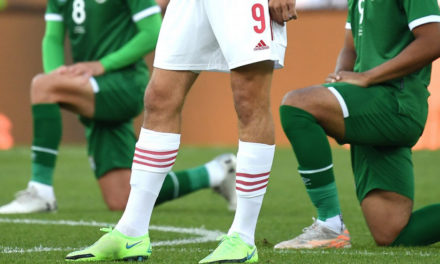A nation that does not know its past does not understand its present, and cannot create its future!"
Europe needs Hungary... which has never let itself be defeated.
Saint László, the first Knight King
When Róbert Károly passed away, he left a rich, well-organized country to his son, Lajos.
The country was in good hands, as the King of Anjou continued his father's policy, and during his reign he raised the country acquired and defended by the Árpáds to an imperial level. The history of Hungary has been shaped by many highly accomplished kings, princes, governors, and generals. However, only one of our kings earned the epithet "great" as a sign of respect for posterity, and that was Lajos Nagy (1342-1382).
Louis of Anjou deserved another epithet, as he was the Knight King.
(It is true that the first knight-king was St. László, who was well ahead of his time, since we can only speak of the age of chivalry in Europe in the 14th century. In addition, our holy king was the role model of King Louis, who demonstrably defined the life path and ruling methods of the Hungarian king who reigned three centuries later. )
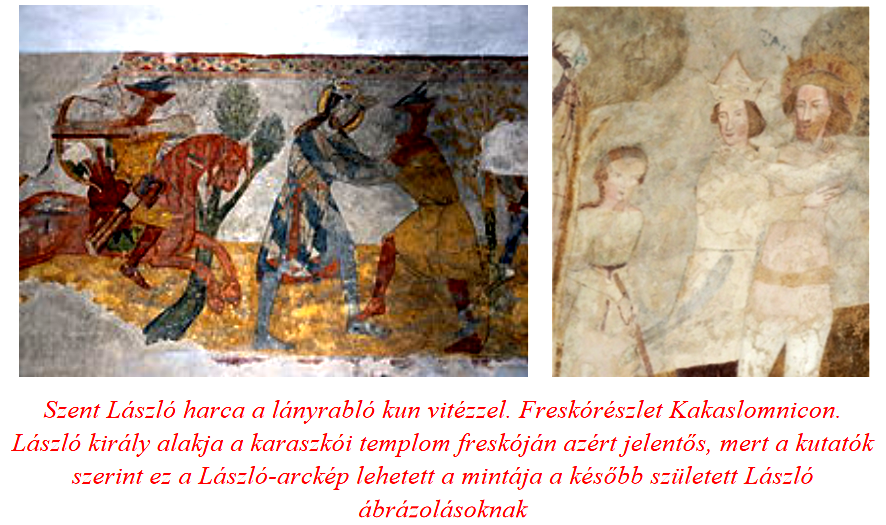
Let's highlight just three spectacular examples that prove the influence Saint László had on Louis the Great.
One of these is the construction of churches and the depiction of the heroic deed of the great forefather in Cerhalm.
The vast majority of László depictions - of which we know more than fifty in the Carpathian Basin - were created in the 14th century, and the faithful could previously only see them on the walls of churches. The goal of King Louis was to give strength and faith to the Hungarians living in the 14th century to fight and defend the Christian faith, because Hungary was hit by numerous attacks in these years as well.
It should be known that the two kings of Anjou, and later also Sigismund of Luxemburg, considered St. László as a role model - in today's terms - as the guide of their political program. (Sigmond of Luxembourg, who was the ruler of Europe's largest empire, was buried in Várad, next to Saint László, according to his will.) Large-scale archaeological excavations are taking place in Várad Castle, which is supported by significant EU subsidies. The Castle has been renovated, among other things, the Austrian barracks shines in all their splendor, there is also a will to excavate the tomb of King Sigismund of Luxembourg. However, the tomb of St. László will not be found - as long as Romanian interests prevail in Várado. The reason is that it lies so deep - four meters below the surface - that there is no money for it. Lajos Nagy was buried in Fehérvár. His grave may have been in the St. Catherine's chapel, the identification of which has not yet been clearly decided.
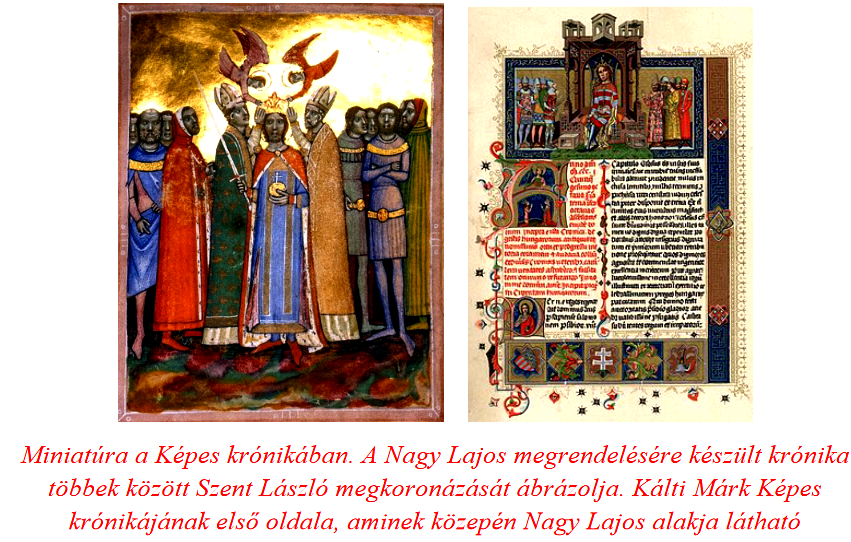
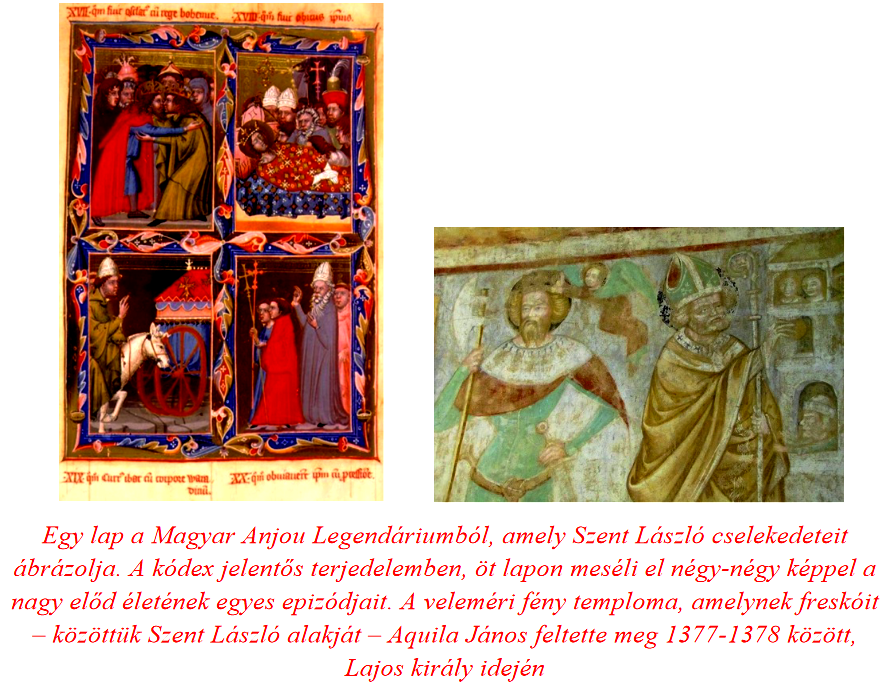

The other set of examples also proves the influence of St. László on the mixed house kings who lived three centuries later. The material monuments glorifying King László are important witnesses of the era. In addition to churches and frescoes, codices, goldsmiths' works, and legendaries are mostly 14th-century artistic masterpieces that are carefully guarded treasures of famous museums in Hungary and around the world. (These include the beautiful, tempera-painted 140-page legendarium made between 1320-1340. The exquisitely crafted picture book is actually a parchment codex made for children - Róbert Károly's children, Lajos and Endre. The priceless pages of the codex are in the possession of several major museums around the world .)
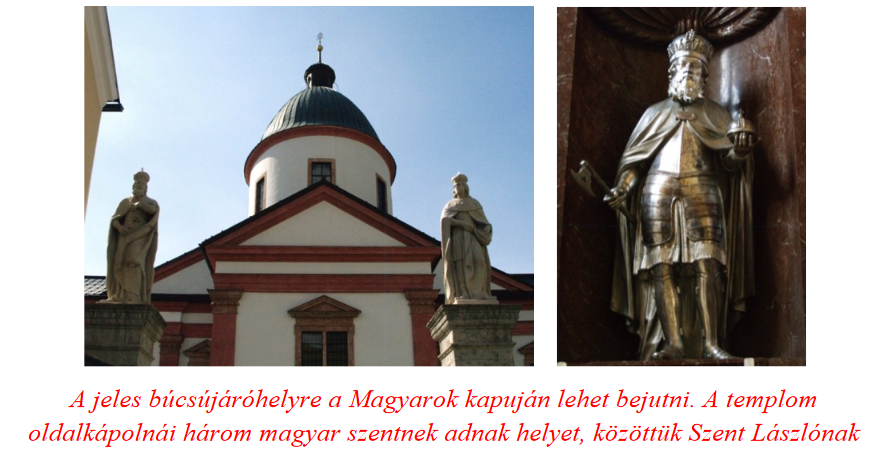
The transformation of Máriacell into a popular place of worship is also linked to a legend of Lajos. It so happened that in 1364, thanks to a celestial sign, King Louis won a brilliant victory over the invading Turkish army. The antecedent of this was a prayer that Lajos said in a dream to the Mother of God of Zelli, who promised him support in the battle. After the victorious battle, out of gratitude - according to the custom of the time - the king piled up the church of Máriacell with numerous relics (for example, the Treasury Madonna) and valuable donations. On the bas-relief above the main entrance of the sanctuary, the masters of later periods depicted Lajos Nagy in the company of the eponymous Virgin Mary. Next to the main entrance, the artists depicted the Hungarian king in baroque clothing.
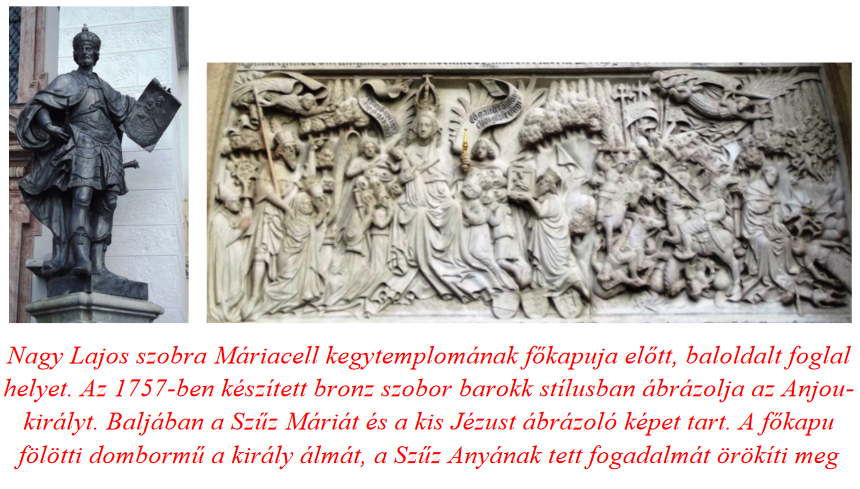

The church built in honor of Hungarian saints, including St. László, was completed in 1367 in the Gothic style, which then became one of the distinguished destinations of Hungarian pilgrims. One of the biggest events of the farewells in Aachen was when the large Hungarian pilgrim army marched into Aachen. By building the Hungarian chapel right next to the church founded by Károly the Great, Lajos the Great proclaimed the worthy rank of the Kingdom of Hungary, the political and economic weight of the country and its commitment to Christianity. In the following centuries, the chapel was significantly destroyed, which was then renovated by Mária Terézia. Behind the chapel is the Aachen Cathedral, which is one of the defining churches of European Christianity and related culture.
The campaigns of King Louis
Lajos, who ascended the throne at the age of sixteen, inherited a strong country, a full treasury, and a well-organized army from his father.
Thanks to Róbert Károly's strictness, the counties were governed by barons loyal to Anjou. Organized foreign relations provided security to the Kingdom of Hungary. Despite this, the weapons did not rest much during Lajos's four-decade reign. Let's not forget that next to the young king stood his determined, talented, and strong political virtues mother, Elizabeth Piast, who came from the Polish royal family.
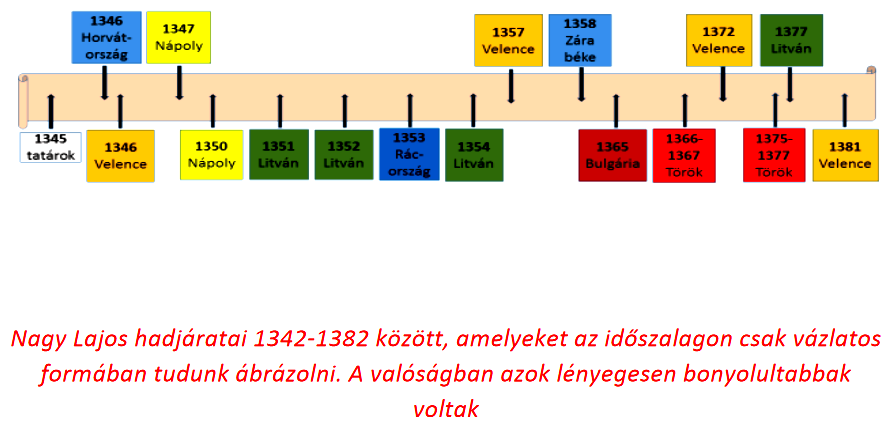
The political situation of the time was complicated by the fact that between 1309 and 1377 the Pope moved his seat from Rome to Avignon in France.
This period, the "captivity in Avignon", coincided with the reign of the Hungarian kings of Anjou. the geographic and political triangle of Naples-Avignon-Visegrád, the role of the popes was unavoidable, as they were partly under the influence of the French kings. During the nearly seven decades of captivity in Avignon, eight heads of the Church ruled the papal throne. Several of them supported Johanna, and the Hungarian king could not change this even by sending his mother Elizabeth to the court in Naples with 5 tons of gold and 6.6 tons of silver. This did not help either, in 1343 Johanna was crowned Queen of Naples.
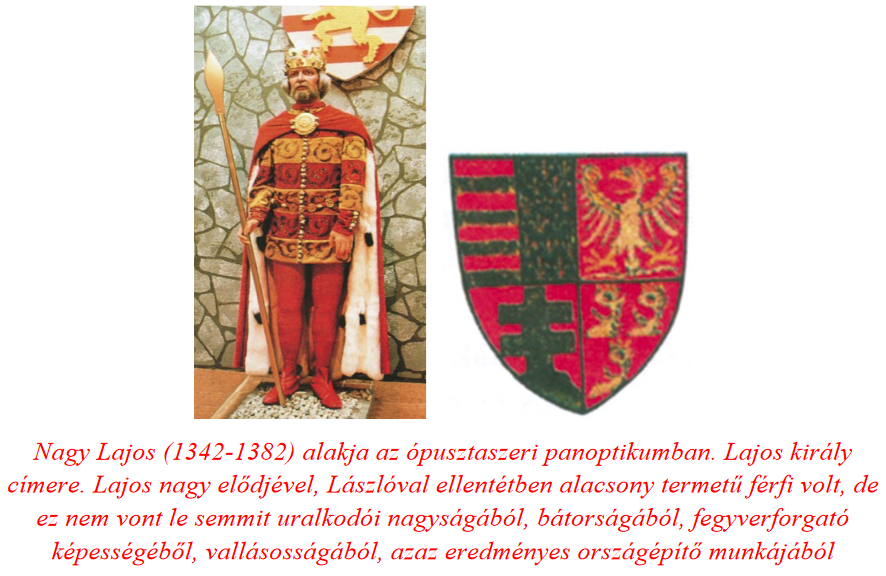
As early as 1347, the young king was able to try the two most important elements of the knightly way of life. On the one hand, what knightly honor required, and on the other hand, the courage that King Louis showed on the battlefield. It happened that his younger brother, Duke Endre, was strangled in Naples in 1345 as an orphan, which could not go without retribution. The alleged murderer or instigator was none other than Endre of Anjou's wife, Queen Johanna I. Róbert Károly's younger son was disliked in Naples because he not only wanted to be the queen's husband, but also fought for the throne.
The first Neapolitan campaign led by Louis started on March 7, 1347, and the Hungarian army returned home after more than a year, in May 1348.
The 10,000-strong army inspired both respect and fear in the Italian city-states. Many of them opened their gates to the Hungarian king without a fight. The first major resistance took place near the city of Capua, where Johanna's new husband, Lajos Tarantói, confronted the Hungarian army. Louis destroyed the enemy in January 1348, and the Kingdom of Naples fell into his hands. (The incident in Aversa reveals Lajos's strictness and his ruling method. In the city where his younger brother was secretly murdered, he hosted a feast for his Neapolitan relatives. During the merry feast, Lajos suddenly changed his voice and called them to account for Endre's death. He beheaded Károly of Durazzó on the spot, the others and imprisoned a relative.
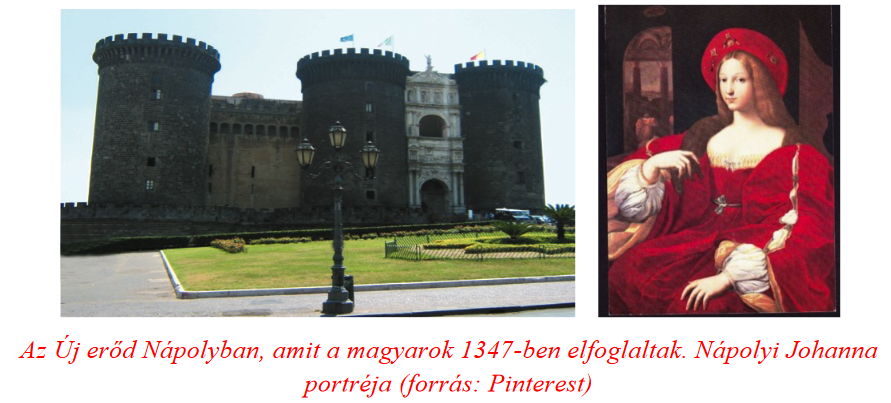
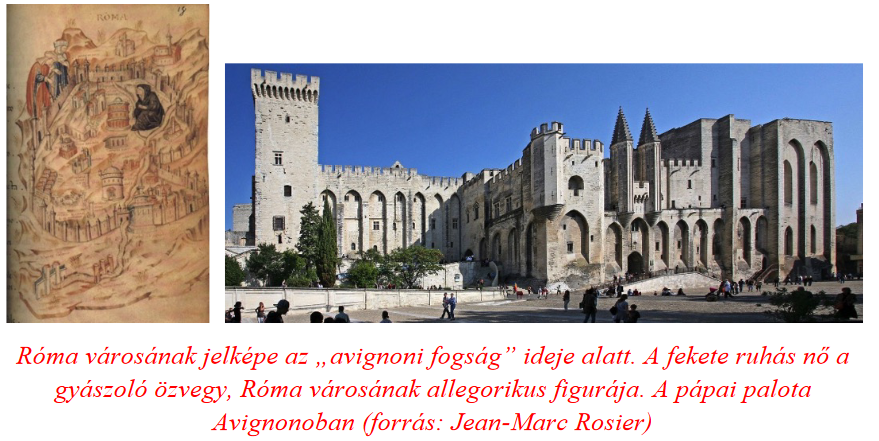
Partly due to the Aversa incident and partly due to the excessive strengthening of Anjou, the Pope did not accept Louis as King of Naples and even threatened him with excommunication.
An even more serious problem was the outbreak of the plague in Italy at the beginning of 1348, which then wreaked havoc throughout Europe. Louis returned to Hungary, leaving some garrisons behind, but the Hungarian rule in Italy soon collapsed. Order was restored by Louis the Great's talented general, István Lackfi, who recaptured Aversa and Naples in 1349. This preparatory warfare made it possible for Lajos, who had recovered from the plague, to set off again towards Naples at the head of his army. (However, the king's young wife, Margit, the 14-year-old daughter of the Moravian prince, was captured by the black death.)
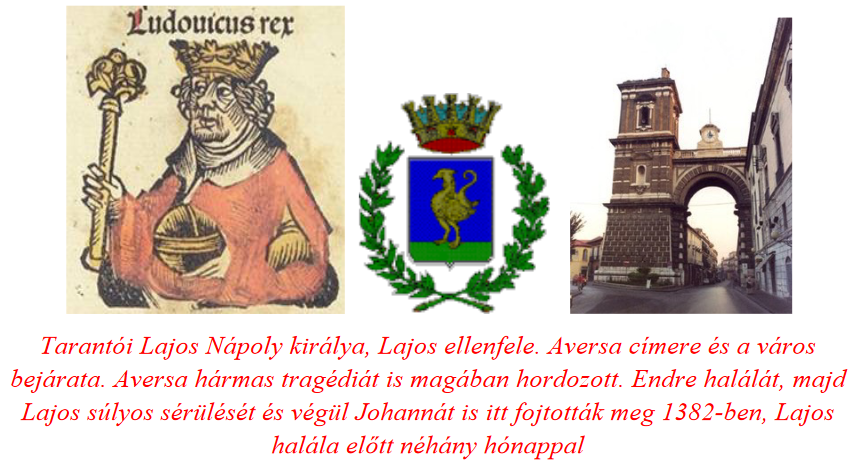
Lajos Nagy led sixteen campaigns, in which, like Szent László, he himself participated and fought in the front lines. On one occasion, at Aversa, he was so seriously injured that his life was in danger. In the second half of the 14th century, the Hungarians launched most campaigns towards Italy and the Balkans. The Hungarian king fought with Venice for the longest time, but he also had to defend the country against the Lithuanians and Tatars.
In these years, the Turkish armies also appeared at the southern borders of the Kingdom of Hungary.
Lajos' army - who also followed in his father's footsteps - was made up of nearly seven thousand heavy horse mercenaries. It should be known that firearms were first used in Hungary in 1354, during the reign of King Louis, and 20-25 years later cannons and gunpowder were already being produced in our country. The second Neapolitan campaign started in April 1350, but this time Louis the Great reached Italy with his army by sea. Miklós Toldi, considered only a literary hero for a long time, also took part in this campaign.

Johanna fled Naples again, as she did in the case of the first Hungarian attack. Although Louis entered Naples, he realized that he would not be able to hold the castle in the long term. In 1352, he made peace with the opposing parties and returned home to Hungary. In the meantime, however, he visited the tomb of St. Peter in Rome, where, according to some records, the Hungarian king underwent a spiritual change.
We must mention the wars against Venice, which were concluded by the Peace of Zadar in 1538.
Louis reconquered Dalmatia and restored Hungarian rule in Croatia as well. With this, he also followed in the footsteps of Szent László and Kálmán Könyves , who were the first to annex the southern coastal areas to the Kingdom of Hungary. With the victory over the Doge of Venice, Hungary became a maritime power, which was also ensured by a naval fleet.

However, he never reached the coast of the Black Sea, just as he never reached the Baltic Sea during his Polish kingdom.
The well-known historical slogan, according to which "three seas wash the shores of Hungary", therefore does not cover either the historical or the geographical reality.
Polish kingdom of Louis the Great
The royal meeting in Visegrád in 1335 and the succession negotiations in 1339 made it possible for the King of Anjou to ascend the Polish throne. Even Róbert Károly and III. Kázmér (the Great) agreed in 1339 that if Kázmér died without a son, the son of Erzsébet Piast would take the throne. In 1370, III. After the death of Kázmér, the Poles crowned Louis the Great as king. It should be noted, however, that despite the centuries-old Polish-Hungarian friendship, Polish historiography does not regard Louis's reign between 1370-1382 as outstanding as we Hungarians do.

At the time of the personal union (Louis was the king of the two countries in one person, but this only applied to him and his descendants by blood), the Hungarian king cared little about Polish affairs, which provoked the dislike of the nobility there. One of the centuries-long indications of this is that the Poles did not call Lajos the "great", they III. The successor of Kázmér (the Great) was referred to as Lajos Magyar. Modern Polish historiography also accused Lajos of being responsible for the downfall of the country in the 18th century. As evidence, they put forward the argument that the decline of the royal power and the parallel rise and strengthening of the Polish nobility occurred because the Hungarian king was able to help Hedvig ascend the throne. It is no longer added that the Polish-Lithuanian personal union was formed thanks to this, which elevated the Kingdom of Poland to the ranks of the great powers.
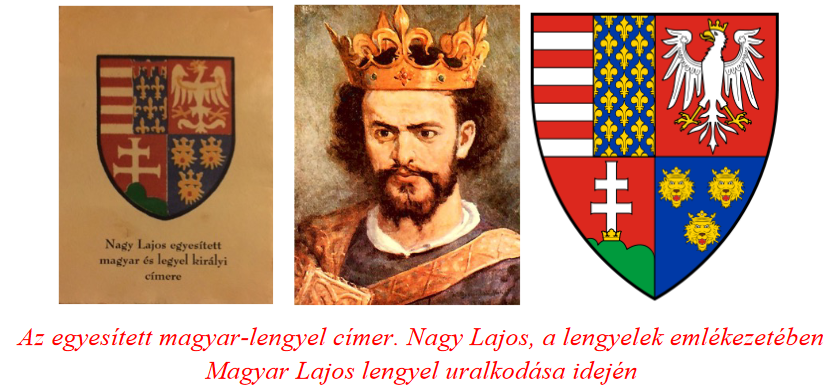
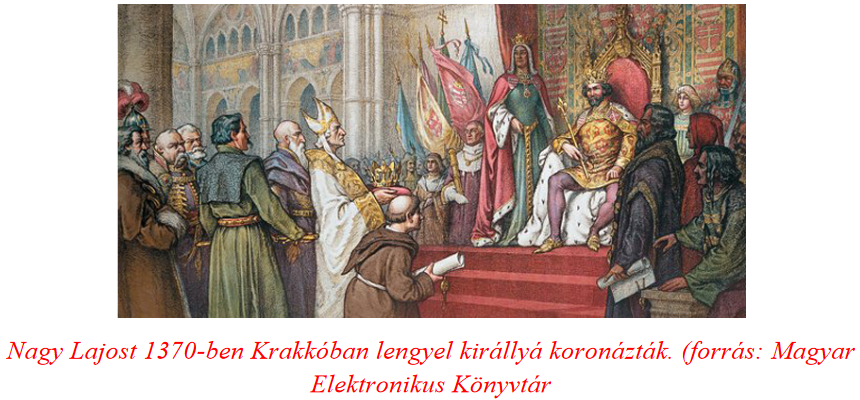
It is probably true that the Hungarian king spent more time in Visegrád than in Krakow. But let's not ignore the fact that during the time of Kazmér, the Hungarian armies protected Poland against the Teutonic Knights attacking from within, the German-Roman Empire attacking from the west, Bohemia, but especially the pagan Lithuanian attacks threatening from the east. The two kings of Anjou repeatedly saved the country from total defeat. After all, Lajos fought five bloody wars with the Lithuanians, whose conversion to Christianity will be completed by his daughter, Hedvig. (Let's add, in the spirit of St. László, which is partly the origin of the name Ulászló, which the Polish-Lithuanian rulers bore.)
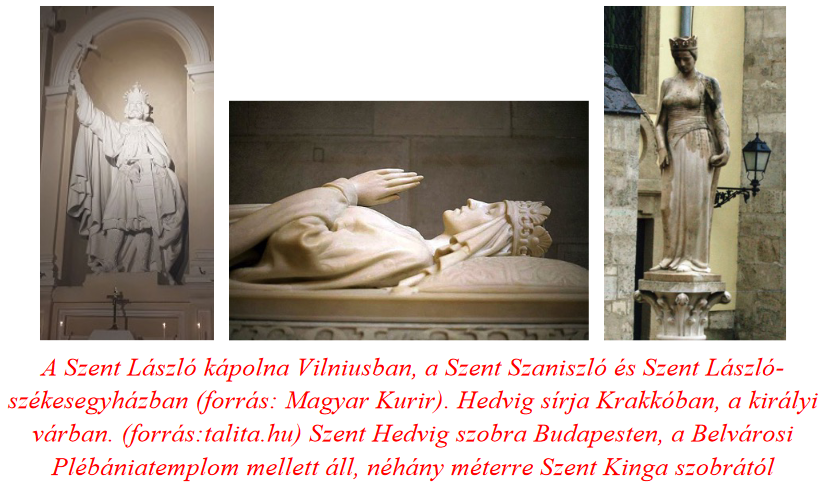
Poland - as almost every time during the past thousand years - could only feel safe from the south.
History does not absolve statesmen of bad actions due to personal mistakes. However, you can justify it! In the last ten years of his life, Lajos suffered from several illnesses, and because of this, he no longer traveled or led as many campaigns as before. They also pointed out that although he spoke five languages, he did not know his mother tongue, Polish. The fact that he crowned himself only in Kraków and not in Gniezno caused anger on the part of the Poles. It was also unfortunate that he sent his mother, the difficult-natured but Polish-born Erzsébet, to Kraków instead, who considered Polish interests secondary. This behavior of his in 1376 caused a bloody rebellion in Kraków by a group of Polish nobility.

Author: Ferenc Bánhegyi
(Cover image source: Wikipedia)
The parts published so far can be read here: 1., 2., 3., 4., 5., 6., 7., 8., 9., 10., 11., 12., 13., 14., 15., 16., 17., 18., 19., 20., 21., 22., 23., 24,, 25.


